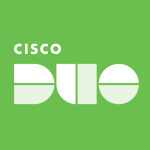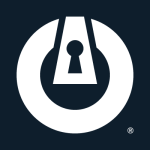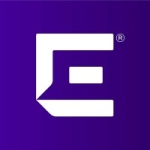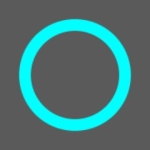What is our primary use case?
When it comes to ISE, the main challenge that we were trying to address is with our retail environments. We don't have control over the physical access to all the ports and we didn't really have any network access control.
ISE has, and will continue to allow us to secure our edge environment at the retail stores. It's also going to provide more security as we are rolling out more wireless access.
We're expanding our footprint to just outside of the retail environment. For example, we're implementing wireless service in our lumber yards. As we progress, we really need to be focused on securing that, and ISE is going to allow us to do that.
How has it helped my organization?
The main way that ISE is improving our organization is by acting as an added layer of security. It's a physical layer at the actual network jacks in our retail environments.
This is also true for our corporate office in conference rooms. We've now got the ability to allow those ports to be hot for a vendor to come in and plug in, and we're not having to rush and go make it hot for them. At the same time, we can still control what access they have without having to be hands-on all of the time.
The other thing with vendors is that in our stores, a lot of times we have some older technology from vendors that is not wireless. Until now, we haven't been able to push those devices onto a guest network. But now with ISE, we are able to dynamically assign those types of devices to a wired guest network.
The fact that Cisco ISE establishes trust, regardless of where requests come from, has helped us come to realize what was on our network. We thought we knew what was on our network, and we thought we had control over devices, but there's a lot out there that can't keep track of, day to day. For example, if a different department adds a computer that handles paint and we didn't know about it, suddenly it's on our network.
Now that we've got ISE, I feel like it's a big step in the right direction in terms of increasing the trust in our network. Not having to trust devices and being able to set those levels of trust and more finely control our network is a benefit.
ISE has really helped us in supporting our distributed network because we are geographically diverse with remote sites in Texas and five surrounding states. This means that we can't always be out there, hands-on.
With retail environments, we can't rely on our employees in the stores to be technically minded all the time. As such, it really helps us not to have to worry about that. We don't have to try and train people that aren't meant to be doing that kind of work, because their job is selling lumber. It's not always being there on top of the security of the network.
What is most valuable?
The most valuable feature for us with ISE is the network access control. It provides both security and visibility to what is on our network.
The control ISE gives us with those devices, whether they're company-owned or BYOD, anything on our network, we now have a little bit more visibility into and more control over how it performs and what access it has on our network.
What needs improvement?
When it comes to improvements with ISE, even though we've been using it, there's still a lot to learn because it's such a robust product. I think that Cisco could do something to counteract the stigma that ISE is cumbersome and hard to use.
There was a big pushback against us implementing this product because as VPs and executives start to talk, they want to talk about everything they've heard, and they had it in their minds that things are the way they are. To proceed with implementing ISE, we had to push against that.
The UI is not as intuitive as some other products, even products inside of Cisco's wheelhouse. To an extent, some of it feels like it's legacy and could be improved upon.
What do I think about the stability of the solution?
One thing with Cisco is that we haven't ever had issues with stability, and ISE lines right up with that. We're using the virtual appliance and we're using VMs. We haven't had any issues there, as long as you know the caveats that go along with their setup.
There have been no issues as far as performance or uptime.
What do I think about the scalability of the solution?
Scalability with ISE goes back to the setup, and that initial planning phase. You have to identify your networks and your devices and what you want to do.
Once you get it set up, then scalability is not an issue. Definitely, the more complex your network, the more time you're going to spend on the pre-setup stage.
How are customer service and support?
I really like Cisco's products. Sometimes, however, I have trouble with the support because you're getting someone that doesn't know your environment. This is something that's just going to happen.
Another frustrating point is that you sometimes get a person that doesn't realize that you might know what you're doing. You've already turned it off and back on, but they've got to walk you through those steps no matter what you tell them.
You feel like it's a battle to get to the point where you actually start to work on the solution. It's not the same with everyone but when we do have to work with Cisco, it's usually a bigger problem that necessitates engaging TAC.
At that point, it's hit or miss. Sometimes they're great and just click and get the problem fixed, whereas other times it's an uphill battle back and forth where you can't get on the same page.
I would rate the technical support a six and a half out of ten.
However, our account team from Cisco, who are the systems engineers that support us, I would rate about a nine. They are always there and are great to work with.
How would you rate customer service and support?
Which solution did I use previously and why did I switch?
This is our first solution for network access control and that level of visibility.
For visibility, we do have CrowdStrike. That gives us visibility into our network, but it only acts on the agent and it uses an ARP request to discover devices that it didn't already know about. You can't really trust that, because if someone gets on maliciously, they're going to know enough to not just be blatantly, obviously there. You want to have a little bit more security in place when they first connect.
How was the initial setup?
The deployment of ISE is definitely more complex than other things, but it's inherent because there's a lot of prep and planning to set up how you're going to handle certain types of devices.
You start realizing that you hadn't even thought of some things and accounted for other things. Definitely, it's a big exercise in prep work. It involves filling out questionnaires and keeping spreadsheets on everything on your network. That said, it was eye-opening and a good experience, but there's definitely quite a bit of work to set up ISE.
We're juggling a lot of things at one time, so it took six months to deploy. A lot of that was not dedicated to ISE, and we were still doing the other parts of our job throughout the process.
What about the implementation team?
We received help setting it up from our reseller, who was Accudata, but they were recently purchased by Converge Technology Solutions. We've got a great relationship with them; they've always got great resources and great account teams.
What was our ROI?
If I were to comment on the return of investment on ISE, I don't really know where to begin because it was something we never did before. It was somewhere where we were lacking. We just didn't have the time or the manpower to do what ISE will do for us.
I'm sure someone out there can crunch the numbers and quantify the ROI on stopping an attack or a breach, but I don't have those numbers and thankfully, we haven't had one yet.
For us, we didn't have the manpower to do it right. Implementing ISE has saved us the need to invest in that manpower.
What's my experience with pricing, setup cost, and licensing?
When it comes to licensing, I'm hoping Cisco is improving that because that's always been a pain point. I usually rely on our account team, which thankfully we have one, to help with the licensing.
Over the years, licensing has been confusing and complicated because there are so many different licenses for each different product and each different iteration of the product.
What other advice do I have?
In terms of advice for anybody who is looking into Cisco ISE, I wouldn't suggest just jumping in and buying ISE. I'm not trying to talk badly about anything, but I would say, do your due diligence and understand your network and what's going to work for you.
Definitely understand that you're getting into a lot with ISE. There's a lot of capability, but I don't feel like just one person working on a hundred networks should be taking that on and trying to manage it themselves.
Overall, this is a good product but there's definitely room for improvement. Also, we're not using everything we could within the product.
I would rate this solution a seven out of ten.
Which deployment model are you using for this solution?
Private Cloud
If public cloud, private cloud, or hybrid cloud, which cloud provider do you use?
Microsoft Azure
Disclosure: My company does not have a business relationship with this vendor other than being a customer.















